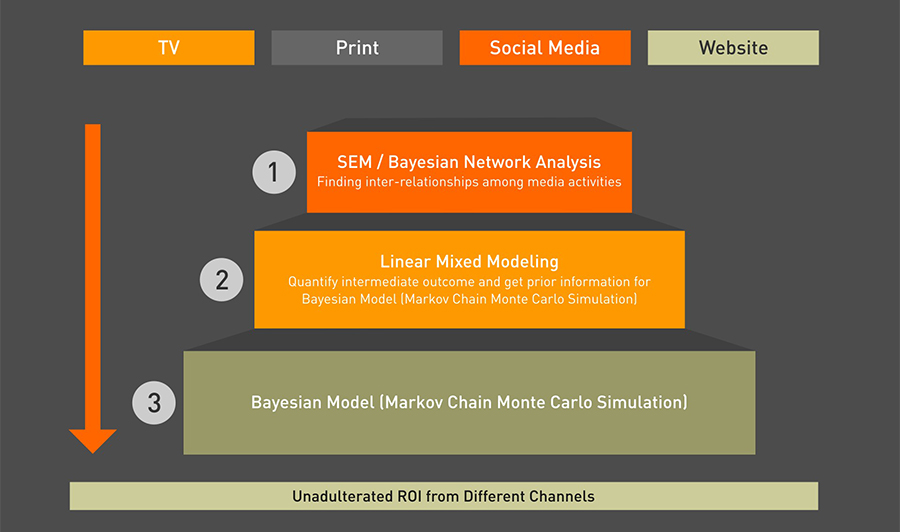‘Buy one get one free.’ The BOGO offer on a toothpaste stares invitingly as the consumer walks into the store. The customer picks the toothpaste and gets it billed. And the sale is done.
But the more pertinent question for marketing managers is whether the customer bought the toothpaste because of the in-store BOGO offer. The consumer was made aware of the brand through various advertisements on television, radio, newspapers, magazines and the Internet. But since the customer purchased the product after seeing the BOGO offer in the store, can one conclude that the in-store campaign was more effective?
The Flaws of Last-Touch Attribution in Marketing Analysis
Till recently, marketing managers attributed sales to the consumers’ last touch points. The last touch attribution analysis gave 100 percent of the credit for conversion to the last thing the customer did before the purchase. Such an attribution analysis is simple and does not consider multi-dimensional data sets. It also does not tell the whole marketing story. This results in incorrect allocation of marketing budgets which either underestimate or overestimate the Return on Investment (ROI) from different marketing vehicles.
Case Study
Co-creating an AI-led Marketing Mix Modeling Solution to Maximize ROI
Read More
With the evolution of digital media (including social media) and big data, there is a greater conflict for marketing managers. It now lies in answering the following questions to allocate future marketing budgets.
- Which channels do I spend on? Which ones do I pull off from?
- How can I quantify the direct and indirect impact of my marketing campaigns?
- Should my marketing budget be focused only on consumers’ last touch points?
- Are my TV/print investments driving household consumption/sales?
- Do all my marketing activities have a direct impact on sales? Or are there intermediate outcomes (equity, consumer perceptions) that, in turn, drive sales?
- What is the build-up time of my brand equity?
- Which of my marketing vehicles are not bringing any significant returns?
To answer such questions and avoid last touch attribution bias, it is important to develop an efficient approach. The approach given below could be an optimal answer for marketing managers to avoid last touch attribution bias and allocate budgets effectively.

Step 1: Structural Equation Modeling (SEM) or Bayesian Network Analysis
This helps us understand how different media activities are linked to sales. It indicates whether or not consumer promotions, radio and search impressions are the leading contributors to sales; how thematic TV contributes to purchases; and which marketing campaigns have had a high impact on the intermediate outcomes (such as spontaneous awareness, brand preference, share of mind) in the path to purchase than to the actual purchase.
Step 2: Linear Mixed Model and Vector Auto Regression (VAR)
This quantifies the contribution and impact made by each of the input factors. It also helps to get prior information for Bayesian Model (Markov Chain Monte Carlo Simulation).
Step 3: Bayesian Modeling (Using Markov Chain Monte Carlo Method)
In real life marketing scenarios, multiple promotions happen simultaneously and a huge co-linearity exists among independent variables. This step brings together most robust estimates in the presence of non-linear effects and highly correlated variables that are common in marketing mix analysis.
After completion of the above steps, market effectiveness and scenario analysis is performed to get the final answers. This ensemble approach prevents last touch attribution bias.
Power of Marketing Mix Modeling for Budget Allocation
Though complicated, this marketing mix modeling combining Bayesian Network Analysis, Linear Mix Modeling/VAR and the Markov Chain Monte Carlo Simulation Method (Bayesian Modeling) is not for the weak-hearted. When applied, this ensemble approach can get you the insights needed as a smart marketer and find the path to purchase which leads to optimal budget allocation. The SEM or Bayesian Network tells us where to go, and the Bayesian Model actually takes us there. Result? Greater accuracy and efficiency in allocating marketing budgets, and healthier marketing ROIs.